This article needs additional citations for verification. (August 2017) (Learn how and when to remove this template message) |

- "Supernatural horror" redirects here. For the film genre, see supernatural horror film.
Horror is a genre of speculative fiction which is intended to, or has the capacity to frighten, scare, disgust, or startle its readers or viewers by inducing feelings of horror and terror. Literary historian J. A. Cuddon has defined the horror story as "a piece of fiction in prose of variable length... which shocks or even frightens the reader, or perhaps induces a feeling of repulsion or loathing". It creates an eerie and frightening atmosphere. Horror is frequently supernatural, though it can be non-supernatural. Often the central menace of a work of horror fiction can be interpreted as a metaphor for the larger fears of a society.
Contents
History
Horror in ancient Greece and Rome
The genre of horror has ancient origins with roots in folklore and religious traditions, focusing on death, the afterlife, evil, the demonic and the principle of the thing embodied in the person. These were manifested in stories of beings such as witchcraft, vampires, werewolves and ghosts. European horror fiction became established through works by the Ancient Greeks and Ancient Romans. In Greek mythology, Prometheus was a Titan who was the inspiration for the title of Frankenstein, or The Modern Prometheus. Prometheus' earliest known appearance is in Hesiod's Theogony. However, the story of Frankenstein was influenced far greater on the story of Hippolytus. Asclepius revived Hippolytus from death. Euripides wrote plays based on the story, "Hippolytos Kalyptomenos" and Hippolytus. Plutarch's "The Lives of the Noble Grecians and Romans: Cimon" describes the spirit of the murderer, Damon, who himself was murdered in a bathhouse in Chaeronea. Pliny the Younger describes Athenodorus Cananites who bought a haunted house in Athens. Athenodorus was cautious since the house was inexpensive. As Athenodorus writes a book about philosophy, he is visited by an aberration bound in chains. The figure disappears in the courtyard; the following day, the magistrates dig up the courtyard to find an unmarked grave.
Horror in the Medieval Era
The establishment of Christianity in Rome was confirmed by the Edict of Milan in 313 A.D., and thus revolutionized the religious landscape of Europe. The revolt by the Goths, the Germanic believers of Gothic paganism, earned them a reputation amongst several early writers and their texts, such as Scriptores Historiae Augustae, Vita Gallienii. The earliest recording of an official accusation of Satanism by the Roman Catholics took place in Toulouse in 1022 A.D. against a couple of clerics. Werewolf stories grew in popularity in French literature of medieval France. Marie de France wrote one of the twelve lais as a werewolf story entitled "Bisclavret".
The Countess Yolande commissioned a werewolf story entitled "Guillaume de Palerme". Anonymous writers penned two werewolf stories, "Biclarel" and "Melion". Much of horror fiction derived itself from the cruelest faces in world history, particularly those who lived in the fifteenth-century. "Dracula" can be traced to the Prince of Wallachia Vlad III whose alleged war crimes were published in German pamphlets in the late Fifteenth Century. The 1499 pamphlet published by Markus Ayrer is most notable for its woodcut imagery. The alleged crimes of the Giles de Rais were said to be the inspiration for "Bluebeard". The vampiress is most notably derived from the real life noblewoman and murderess, Elizabeth Bathory. Elizabeth Bathory in popular culture helped usher in the emergence of horror fiction in the 18th-Century, such as through László Turóczi in his 1729 book, Tragica Historia.
Gothic horror in the 18th century
The Eighteenth century slowly directed the horror genre into traditional Gothic literature. 18th century Gothic horror drew on these sources with the seminal and controversial The Castle of Otranto (1764) by English author Horace Walpole. This marked the first incorporated elements of the supernatural instead of pure realism. In fact, the first edition was published disguised as an actual medieval romance from Italy discovered and republished by a fictitious translator. Once revealed as contemporary, many found it anachronistic, reactionary, or simply in poor taste—but it proved to be immediately popular. That first novel of Gothic horror inspired such works as Vathek (1786) by William Beckford, A Sicilian Romance (1790), The Mysteries of Udolpho (1794) and The Italian (1796) by Ann Radcliffe and The Monk (1797) by Matthew Lewis. A significant amount of horror fiction of this era was written by women and marketed at a female audience, a typical scenario being a resourceful female menaced in a gloomy castle.
Horror in the 19th century
The Gothic tradition blossomed into the genre modern readers call horror literature in the 19th century. Influential works and characters that continue resonating with film and cinema today saw their genesis in such works as the Brothers Grimm's "Hänsel und Gretel" (1812), Mary Shelley's Frankenstein (1818), Washington Irving's The Legend of Sleepy Hollow (1820), Jane C. Loudon's "The Mummy!: Or a Tale of the Twenty-Second Century" (1827), Victor Hugo's The Hunchback of Notre Dame (1831), Thomas Peckett Prest's Varney the Vampire (1847), Nathaniel Hawthorne's The Scarlet Letter (1850), the works of Edgar Allan Poe, the works of Sheridan Le Fanu, Robert Louis Stevenson's Strange Case of Dr Jekyll and Mr Hyde (1886), Oscar Wilde's The Picture of Dorian Gray (1890), H. G. Wells' The Invisible Man (1897), and Bram Stoker's Dracula (1897). Each of these novels and novellas created an enduring icon of horror seen in modern re-imaginings on the stage and screen.
Horror in the 20th century
The proliferation of cheap periodicals, as early as the turn of the century, led to a boom in horror writing. For example, Gaston Leroux serialized his "Le Fantôme de l'Opéra" before it was a novel in 1910. One writer who specialized in horror fiction for mainstream pulps such as All-Story Magazine was Tod Robbins, whose fiction dealt with themes of madness and cruelty. Later, specialist publications emerged to give horror writers an outlet, including Weird Tales and Unknown Worlds.
Influential horror writers of the early 20th century made inroads in these mediums. Particularly, the venerated horror author H. P. Lovecraft, and his enduring Cthulhu Mythos pioneered the genre of cosmic horror, and M. R. James is credited with redefining the ghost story in that era.
The serial murderer became a recurring theme in horror fiction. Yellow journalism and sensationalism of various murderers, such as Jack the Ripper, and lesser so, Carl Panzram, Fritz Haarman, and Albert Fish, all perpetuated this phenomenon. An example of this is found in Charles S. Belden's unpublished 1932 short story, "The Wax Works". The trend continued in the postwar era, partly renewed after the murders committed by Ed Gein. In 1959, Robert Bloch, inspired by the murders, wrote Psycho. The murders committed by Charles Schmid inspired Joyce Carol Oates to publish the short story, "Where Are You Going, Where Have You Been?" In 1969, the crimes of the Manson family further influenced the slasher theme in horror fiction of the 1970s. In 1981, Thomas Harris wrote Red Dragon as the first novel to introduce Dr. Hannibal Lecter. The character is said to be based on the real life Dr. Alfredo Balli Trevino. In 1988, Harris wrote the sequel, The Silence of the Lambs.
Early cinema was inspired by many aspects of horror literature, and early horror cinema started a strong tradition of horror films and subgenres based on horror fiction that continues to this day. Up until the graphic depictions of violence and gore on the screen commonly associated with the 1960s and 1970s slasher films and splatter films, comic books such as those published by EC Comics (famous for series such as Tales From The Crypt) in the 1950s satisfied readers' quests for horror imagery that the silver screen could not provide. This imagery made these comics controversial, and as a consequence they were frequently censored.
Many modern novels claim an early description of the living dead in a precursor to the modern zombie tale, including Dennis Wheatley's "Strange Conflict" (1941), H.P. Lovecraft stories such as "Cool Air," (1925) "In The Vault," (1926) and "The Outsider," (1926). Richard Matheson's novel I Am Legend (1954) would also influence an entire genre of apocalyptic zombie fiction emblematic of the films of George A. Romero.
Contemporary horror fiction
One of the best-known contemporary horror writers is Stephen King, known for writing Carrie, The Shining, It, Misery and many more. Beginning in the 1970s, King's stories have managed to attract a large audience, for which he was prized by the U.S. National Book Foundation in 2003.[21] Popular contemporary horror authors include Brian Lumley, James Herbert, Dean Koontz, Clive Barker,[22] Ramsey Campbell,[23] and Peter Straub.
Best-selling book series of contemporary times exist in related genres to horror fiction, such as the werewolf fiction urban fantasy Kitty Norville books from Carrie Vaughn, the erotic Gothic fiction of Anne Rice, and Goosebumps by R.L. Stine. Elements of the horror genre continue to expand outside the genre. The alternate history of more traditional historical horror in a novel such as The Terror exists on bookstore shelves next to genre mash ups such as Pride and Prejudice and Zombies and the historical fantasy and horror comics such as Hellblazer and Mike Mignola's Hellboy. Horror serves as one of the central genres in more complex modern works such as Mark Z. Danielewski's House of Leaves, a finalist for the National Book Award. There are also horror novels for teens, such as The Monstrumologist by Rick Yancey.
Characteristics
One of the defining traits of the genre of horror is that it provokes a response; emotional, psychological or physical, within readers that causes them to react with fear. One of H.P. Lovecraft's most famous quotes about the genre is that: "The oldest and strongest emotion of mankind is fear, and the oldest and strongest kind of fear is fear of the unknown."[24] the first sentence from his seminal essay, "Supernatural Horror in Literature".
In her essay "Elements of Aversion", Elizabeth Barrette articulates the need by some for horror tales in a m
Watch movie Horror Story online on Amazon
Watch movie Horror Story online
Watch The Movie On PrimeSherni Full HD Movie Download
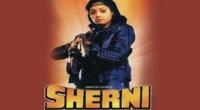
Saat Bijliyan Full HD Movie Download
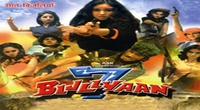
Veera Madakari (Hindi) Full HD Movie Download
.jpg)
Rani Roopmati Full HD Movie Download
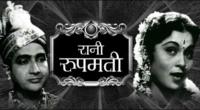
Film Hi Film Full HD Movie Download
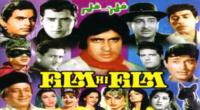
Bazaar (1982) Full HD Movie Download
.jpg)
Hifazat (1975) Full HD Movie Download
.jpg)
Chak Jawana Full HD Movie Download
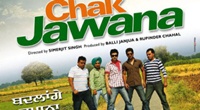
Victoria House Full HD Movie Download
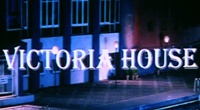
Amma Durgamma Full HD Movie Download
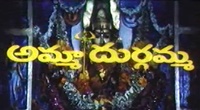
Crime Story Full HD Movie Download
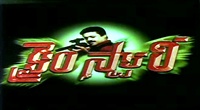
Devi Abhayam Full HD Movie Download
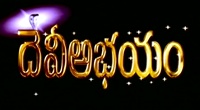
Velaikkaran Full HD Movie Download
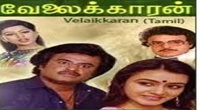
Meri Adalat Full HD Movie Download
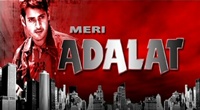
Cats and Dogs Full HD Movie Download
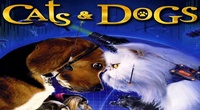
Alapirandhavan Full HD Movie Download
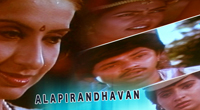
Seetha Ramulu Full HD Movie Download
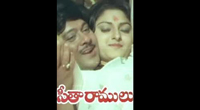
Neti Siddhartha Full HD Movie Download
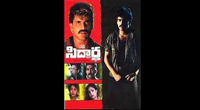
Andari Kosam Full HD Movie Download
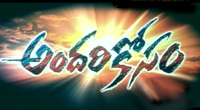
Palleturi Pidugu Full HD Movie Download
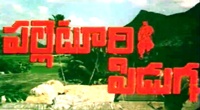
Daag: A Poem of Love Full HD Movie Download
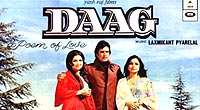
Download latest Movie from bollywood
- 1> baaghi 3
- 2> THE SKY IS PINK MOVIE FULL STORY AND REVIEW
- 3> Luka Chuppi
- 4> TO ALL THE BOYS I’VE LOVED BEFORE
- 5> Kabir Singh
- 6> Street Dancer 3D
- 7> Simmba
- 8> Gone Girl
- 9> The Girl Who Lived
- 10> Ludo
- 11> DILWALE DULHANIA LE JAYENGE
- 12> GUILTY
- 13> The Godfather
- 14> Adventures of Rusty
- 15> Sooryavanshi
- 16> Satyameva Jayate 2
- 17> Thappad
- 18> Bhool Bhulaiyaa 2
- 19> KGFChapter 2
- 20> Mardaani 2
- 21> Pinjar
- 22> Shivaji maharaj
- 23> Ek Villian 2
- 24> Hungama 2
- 25> Divergent
- 26> Mumbai Saga
- 27> The Internship
- 28> HIT (telugu)
- 29> Panga
- 30> The perfect date
- 31> 16 December
- 32> Gopala Gopala (Telugu)
- 33> Brahmastra
- 34> Gangubai Kathiawadi
- 35> Manmadhudu
- 36> Nenu local
- 37> Mahanati
- 38> Shatamanam bavathi
- 39> Lagaan
- 40> After
- 41> MOM
- 42> Shamshera
- 43> Raguvaran BTech
- 44> Khakee
- 45> The villain
- 46> OM
- 47> Mr. perfect
- 48> Bueatifull mind
- 49> Hichki
- 50> Gabbar Singh
- 51> Jogi
- 52> Before Sunrise
- 53> Before Sunset
- 54> Before Midnight
- 55> The Big Bull
- 56> Top Gun: Maverick
- 57> The Purge
- 58> The Sky is Pink
- 59> Laxmmi Bomb
- 60> Sadak 2
- 61> Sufna
- 62> Prithviraj
- 63> PK
- 64> Coolie No 1(2020)
- 65> Black Widow
- 66> Dear Zindagi
- 67> Dil Bechara
- 68> PHIR HERA PHERI
- 69> WAR
- 70> Dostana
- 71> RRR: Roudram Ranam Rudhiram
- 72> Maidan
- 73> Dabbang 3
- 74> Chhalaang
- 75> life as we know it
- 76> SherShaah
- 77> Sandeep Aur Pinky Faraar
- 78> Event Horizon
- 79> 83
- 80> Radhe: Your Most Wanted Bhai
- 81> Gunjan Saxena: The Kargil Girl
- 82> Mr India
- 83> Vivah
- 84> Anokha Bandhan
- 85> Ghost
- 86> Bhoot: Part One - The Haunted Ship
- 87> Haseen Dilruba
- 88> Laal Singh Chaddha
- 89> Qismat
- 90> Rajput
- 91> Drive
- 92> Dil Chahta Hai
- 93> Dil Ki Baazi
- 94> Dil Ka Rishta
- 95> Teesri Manzil
- 96> Dil
- 97> Love Aaj Kal
- 98> Khaali Peeli
- 99> Bunty Aur Babli 2
- 100> Atrangi Re
- 101> Gulabo Sitabo
- 102> Jodi
- 103> Suraj Pe Mangal Bhari
- 104> Deewana
- 105> Attack
- 106> Sardar Udham Singh
- 107> Toofan
- 108> THE LOVEBIRDS
- 109> Jersey
- 110> Ginny Weds Sunny
- 111> Thalaivi
- 112> Shiddat
- 113> Angels vs Zombies
- 114> Koi Mil Gya
- 115> Thank God
- 116> Bhuj: The Pride of India
- 117> Hum Aapke Hain Kaun
- 118> The Platform
- 119> Bird Box
- 120> Roohi Afzana
- 121> Torbaaz
- 122> Nikamma
- 123> World War Z
- 124> Extraction
- 125> Train to Busan
- 126> Life of Pi
- 127> SHAADI MEIN JROOR AANA
- 128> Himmat Aur Mehnat
- 129> To All The Boys: P.S. I Still Love You
- 130> Mimi
- 131> Good Newwz
- 132> Shubh Mangal Zyada Saavdhan
- 133> Raabta
- 134> Harry Potter and the Philosopher's Stone
- 135> Harry Potter and the Chamber of Secrets
- 136> Chhapaak
- 137> War of the Worlds
- 138> Harry Potter and the Prisoner of Azkaban
- 139> Harry Potter and the Goblet of Fire
- 140> MURDER MYSTERY
- 141> Shakuntala Devi
- 142> Bachchan Pandey
- 143> Jayeshbhai Jordar
- 144> Sheer Qorma
- 145> Saina
- 146> 'O' Pushpa I hate tears
- 147> Kedarnath
- 148> MS Dhoni The Untold Story
- 149> Chhichhore
- 150> Badhaai Ho
- 151> Unstoppable
- 152> Oz the Great And Powerful
- 153> The Girl on the Train
- 154> Haathi Mere Saathi 2020
- 155> The Conjuring: The Devil Made Me Do It
- 156> Gandhi Se Pehle Gandhi
- 157> The Song of Scorpions
- 158> Srimanthudu
- 159> Hello Guru Prema Kosame
- 160> Beauty and The Beast
- 161> Black Panther
- 162> Charlie and the Chocolate Factory
- 163> Bole Chudiyan
- 164> Fidaa
- 165> Duvvada Jagannadham
- 166> Bruce Lee: The Fighter
- 167> Hyper
- 168> Yaara
- 169> Red (2020)
- 170> Shivam
- 171> That Is Mahalakshmi
- 172> Nishabdham
- 173> Aashram 2020 web series
- 174> Laxmii
- 175> Mismatched
- 176> STUDENT OF THE YEAR 2
- 177> NAIL POLISH
- 178> Ramprasad Ki Tehrvi
- 179> KAAGAZ
- 180> 12 o Clock
- 181> The Power
- 182> bolo hau
- 183> Tribhanga
- 184> JAMUN
- 185> Madam Chief Minister
- 186> Maasaab
- 187> Aadhaar
- 188> Tanhaji
- 189> Bhaagi 3
- 190> Bhootnath
- 191> MALANG
- 192> Jai Mummy Di
- 193> Haathi Mere Saathi 2021
- 194> Shakeela
- 195> Unpaused
- 196> Annayya
- 197> Vamsoddharakudu
- 198> Mrugaraju
- 199> Narasimha Naidu
- 200> Sankranti
- 201> Manasu Maata Vinadhu
- 202> Anjaane
- 203> Apaharan
- 204> Bachke Rehna Re Baba
- 205> Bewafaa
- 206> Roohi
- 207> Radhe
- 208> Zindagi Khoobsoorat Hai
- 209> Yeh Mohabbat Hai
- 210> Yeh Kya Ho Raha Hai?
- 211> The Tomorrow War
- 212> DehradunDiary
- 213> Meri Shaadi Karaoo
- 214> Matruu Ki Bijlee Ka Mandola
- 215> No One Killed Jesica
- 216> Aag Ka Goola
- 217> Eight Million Dollars
- 218> Three Hundred
- 219> Cats and Dog
- 220> Decoy
- 221> Gold Rush
- 222> You Have Got Mail
- 223> Final Destination three
- 224> Tofan
- 225> Jungle
